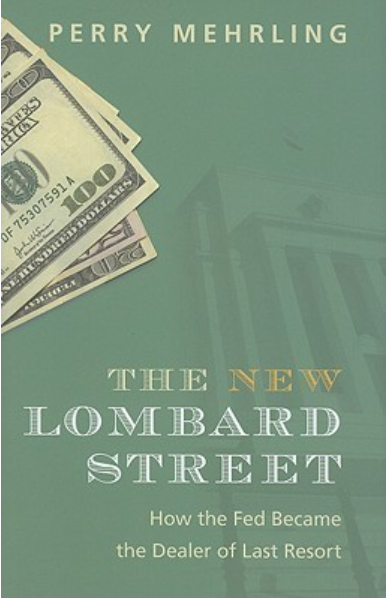The New Lombard Street: How the Fed Became the Dealer of Last Resort by Perry G. Mehrling

ONE
Lombard Street, Old and New
Writing in 1967, before he had yet formulated his famous Fi-
nancial Instability Hypothesis, the American monetary econo-
mist Hyman Minsky identified the starting point for his analysis.
“Capitalism is essentially a financial system, and the peculiar be-
havioral attributes of a capitalist economy center around the im-
pact of finance on system behavior.”1 From this point of view, the
key institutions of modern capitalism are its financial institutions,
which make a business out of managing the daily inflow and out-
flow of cash on their balance sheets. And the quintessential finan-
cial institutions are banks, whose daily cash inflows and outflows
are the mechanism of the modern payments system.
Everyone else—households, businesses, governments, even en-
tire nations—is also a financial institution since, in addition to
whatever else they do, they must attend to the consequences of
their activities for their own daily cash flow. Indeed, this daily cash
flow, in and out, is the crucial interface where each of us connects
with the larger system. This interface provides the cash that makes
it possible for us to pursue today dreams for the future that would
otherwise be impossible; but it does so at the cost of committing
us to make future payments that can, if our dreams do not work
out, constrain our independence more or less severely. The seduc-
tive allure of present credit and the crushing burden of future debt
are two faces of the same creature.
The Inherent Instability of Credit
The two faces of credit show themselves not only at the level of
each individual, but also at the level of the system as a whole be-
cause one person’s cash inflow is another person’s cash outflow. If
the allure of credit induces one person to increase spending, the
immediate result is income somewhere else in the system, which
income is then available for additional spending. Similarly, if the
burden of debt induces one person to decrease spending, the im-
mediate result is reduced income somewhere else in the system,
and thus possibly also reduced spending. This interaction of bal-
ance sheets is the source of what the British monetary economist
Ralph Hawtrey called the inherent instability of credit.2 In his
view, the main job of the central bank is to prevent a credit-fueled
bubble from ever getting started, in order to avoid the collapse
that inevitably follows.
But, from another point of view, the inherent instability of
credit is not entirely a bad thing. On the way up, real things get
built, new technologies get implemented, and productive capacity
expands. The Austrian economist Joseph Schumpeter always in-
sisted that credit is critical for the process of “creative destruction”
that is the source of capitalism’s dynamism, because it provides the
crucial mechanism that allows the new to bid resources away from
the old. Instability is, from this point of view, inseparable from
growth, and a central bank that intervenes to control instability
runs the risk of killing off growth by stifling the new on the way
up and coddling the old on the way down.3
In any concrete case, the question therefore arises: are we look-
ing at a Hawtreyan speculative bubble that we want to rein in, or
at Schumpeterian dynamic growth that we want to let run? One
reason this question is hard to answer is that a credit-fueled boom
typically involves a bit of both. That is why we seem always to
The New Lombard Street: How the Fed Became the Dealer of Last Resort by Perry G. Mehrling




